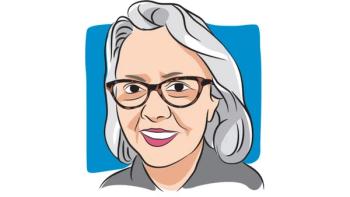
XRAYS Separates the Help from the Hype to Make Sense of Cancer Research in the News
The program XRAYS is a resource to help patients, survivors and their loved ones make sense of the articles on hereditary cancer they see in the mainstream media and via social media platforms.
At this weekend’s FORCE annual meeting, attendees will learn about the organization’s resource to help patients, survivors and their loved ones to make sense of the articles on hereditary cancer they see in the mainstream media and via social media platforms almost every day.
The goal of the project, nicknamed XRAYS (eXamining the Relevance of Articles for Young Survivors), is to “separate the help from the hype,” by helping survivors and others at high genetic risk of cancer to understand the basics of how hereditary cancer research is reported in the media.
In an interview with CURE when XRAYS was first launched, Lisa Rezende, Ph.D, explained that it all started with the message board. She and her colleagues were noticing more and more questions on FORCE's message board about the potential of early-phase studies in animals and very small human population trials.
Rezende noted that one basic science study looking at BRCA and rat brain development alarmed several people on the message board.
"Some report had 'BRCA' and 'seizures' in the same sentence because this was a brain development study," said Rezende, the Vice President of Education for FORCE. "It started making people concerned that they were at some sort of risk, when that wasn't what the study was saying at all."
"It was those sorts of concerns that made us see that we needed to have somebody monitoring the media, monitoring conversation on social media about media reports and writing the articles from the perspective of the patient."
With this in mind, the team at FORCE came up with a plan with a goal aligned with their “E” in the group’s name: Empower.
As a team, Rezende and Julie Hyunh, M.S., a FORCE research associate, identify research gaining significant attention and discussion in the mainstream media. While mainstream media is the primary focus, Rezende said, they do monitor more specialty publications like CURE, Oncology Nursing News and Science Daily.
Articles are rated for their overall research design (which accounts for the study's control, sample size and construction), analysis of the study (which asks whether the data answers the study's question) and relevance. Once the score is determined and agreed upon, Rezende and Hyunh then send their report to FORCE's advisory board, made up of active researchers and clinicians in cancer, genetics, surgery, behavioral health, policy and survivorship.
The educational benefit of XRAYS is twofold, Rezende explained. "The immediate thing we wanted to do was have something set up where we can have a systematic way to respond and talk about these studies that are in the news from the patient's perspective," she says.
A typical post in XRAYS summarizes why the study is important, its key findings, and importantly, puts the findings in context. Relevant questions to ask your health care provider are also included. The site also invites people to suggest articles for review.
There are not enough outlets looking at research and news from a patient's perspective, Rezende noted. Whether it's a patient, survivor or caregiver reading, she said she hopes XRAYS will answer the question, "What does this mean for me?"
As time goes on, Rezende said she hopes to get their audience to a point where they can understand, dissect and verify a study or news article themselves.
The
____________________________________________________________________________
Additional reporting by Andrew Roth.




